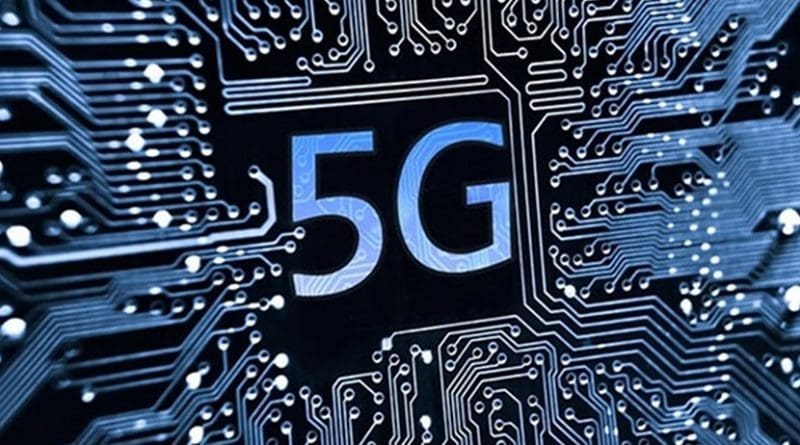The Consequences Of Accelerating The 5G Race – Analysis
By Observer Research Foundation
By racing to roll-out 5G networks for the sake of being cutting-edge, governments and telecom players are giving little to no consideration of its consequences.
By Trisha Ray
On April 3, 2019, two days ahead of its planned April 5th launch, South Korea became the first country in the world to roll-out a nationwide 5G network. South Korea is one of the three telecom firms deploying Huawei’s technology; the early launch was reportedly being a response to rumours that U.S-based Verizon would plan a roll-out on April 4th. Given these facts, it seems that the two powers figure prominently in the cost calculus of most of the world’s aspiring technology leaders.
Huawei is making headlines all over the world over for its role in intensifying the US-China strategic competition. In January, members of the United States House of Representatives identified Huawei as an “intelligence-gathering arm of the Chinese Communist Party” and “a growing threat to American national security”. However, with 40 5G contracts already under its belt — none of which are in mainland China — the Chinese telecom appears to be undeterred; it is making headway in both established and emerging markets.
Meanwhile, on the other side of the Indo-Pacific, the Indian Department of Telecom announced that its 5G trials would begin by early 2020. Alongisde India’s Airtel and Reliance Jio, Samsung and Huawei, are amongst the firms invited for these trials.
The fight for 5G dominance is driven primarily by the exponential growth of global network traffic. Between 2017 and 2022, global IP traffic is expected to triple. In most of the developed West, this growth is considered ‘fixed traffic’ – i.e it is meant for residential or commercial connections and ISPs. For most of the developing world, especially India and China, this growth is driven by mobile connections. In other words, more and more people are online; their demands for mobile content are mostly video. For developing countries, therefore, the primary use case for 5G is Enhanced Mobile Broadband (eMBB) which implies better network capacity, coverage, and data rates.
5G is key for countries looking to capitalise on future technology. In the case of India, high-speed, high-reliability, low-latency mobile networks could improve the accessibility of services such as mobile banking and healthcare, and enable exponential growth in opportunities for unemployed or underemployed people to engage in fulfilling and productive work. This is especially true in light of the impact of automation on employment. As the National Digital Communications Policy 2018 states: “[T]he convergence of a cluster of revolutionary technologies including 5G, the cloud, IOT and data analytics, along with a growing start-up community, promise to accelerate and deepen its digital engagement, opening up a new horizon of opportunities.” This is an optimistic view.
Finally, 5G is an enabler for critical Fourth Industrial Revolution (4IR) technologies. For instance, the Internet of Things (IoT), which requires ultra high-speed ultra low-latency networks, will need the capacities enabled by 5G.
With these huge advantages the network can offer, it is no surprise that 5G is embroiled in a strategic competition rhetoric. However, the winner-takes-all narrative is to our collective detriment. The biggest threats to our 5G future are the roll-out of potentially immature technologies, fraudulent claims to being “5G,” and a lack of understanding about the effects of the hyper-connectivity enabled by this technology.
Two high-profile 5G rollouts — namely those in South Korea and the United States — are already plagued by complaints of unstable connections and reports that 5G connections are no faster than LTE networks. The case of AT&T putting up a 5G logo on its LTE phones was another challenge. In addition to these short term drawbacks, there is a bigger concern about the vulnerability of 5G networks and the potential of a large scale cyber attack. A recent piece by Robert Spalding in the New Yorker highlights some of these concerns: “5G is not just for refrigerators. It’s farm implements, it’s airplanes, it’s all kinds of different things that can actually kill people or that allow someone to reach into the network and direct those things to do what they want them to do. It’s a completely different threat that we’ve never experienced before”.
By racing to roll-out 5G networks for the sake of being cutting-edge, governments and telecom players are giving little to no consideration of its consequences. These must be taken seriously to prevent potentially serious damage.


The consequences of early, pre-standard 5G roll-outs are huge!…IMHO, all the existing 5G deployments will have to be upgraded to the ITU-R IMT 2020 standard sometime in 2021. That will include a different version of 5G-NR, 5G signaling and a 5G mobile packet core vs the LTE anchor in all exisiting 5G NR NSA deployments. And the frequencies may also change, pending the outcome of the IRC 19 conference in Egypt this fall. That could be a super forklift upgrade for wireless network operators!